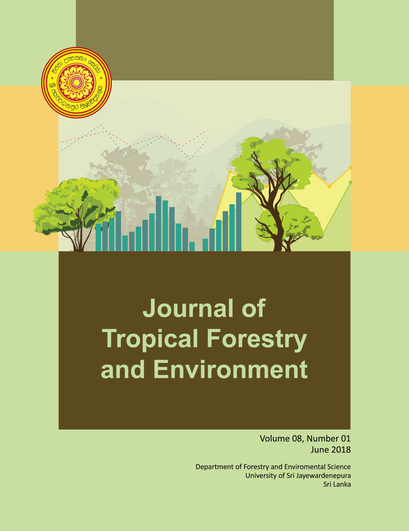Assessment of Root Plate Structure in Wind-Thrown Trees of Melia dubia
DOI:
https://doi.org/10.31357/jtfe.v8i1.3482Abstract
Root plays a significant role in tree growth and development and information pertaining to spread of the root and its depth will be useful for establishing plantations. Most of the root studies are generally carried out in trees growing in urban areas in avenues, but limited studies are carried out in plantations. Being an underground part of the tree, there are inherent difficulties in understanding root architecture. Uprooting of trees due to storm or wind damage provides an ideal opportunity to obtain critical understanding about tree roots. Such study has been carried out in an 11 year old storm ravaged Melia dubia plantation in Punjab, India. Field observations such as tree girth, root girth, root plate width and depth was recorded on uprooted trees. A large variability was recorded for all the traits. Root plate width and depth ranged from 1.42 to 5.17 m and 0.75 to 2.50 m, respectively. A strong positive relationship between tree girth and primary root girth, root plate width and depth identified in this study provides base line information which can be used while establishing M. dubia plantations.
Keywords: Melia dubia, root plate, root width, root depth, wind-thrown
Downloads
Published
How to Cite
Issue
Section
License
The publisher retain the copyrights of contents published, and all open access articles are distributed under the terms of the Creative Commons Attribution-Noncommercial-No Derivative Works 3.0 Unported License[U1], which permits unrestricted use, distribution and reproduction in any medium, provided that the original work is properly cited.
You can download the Legal Code for this License at: http://creativecommons.org/licenses/by-nc-nd/3.0/legalcode


